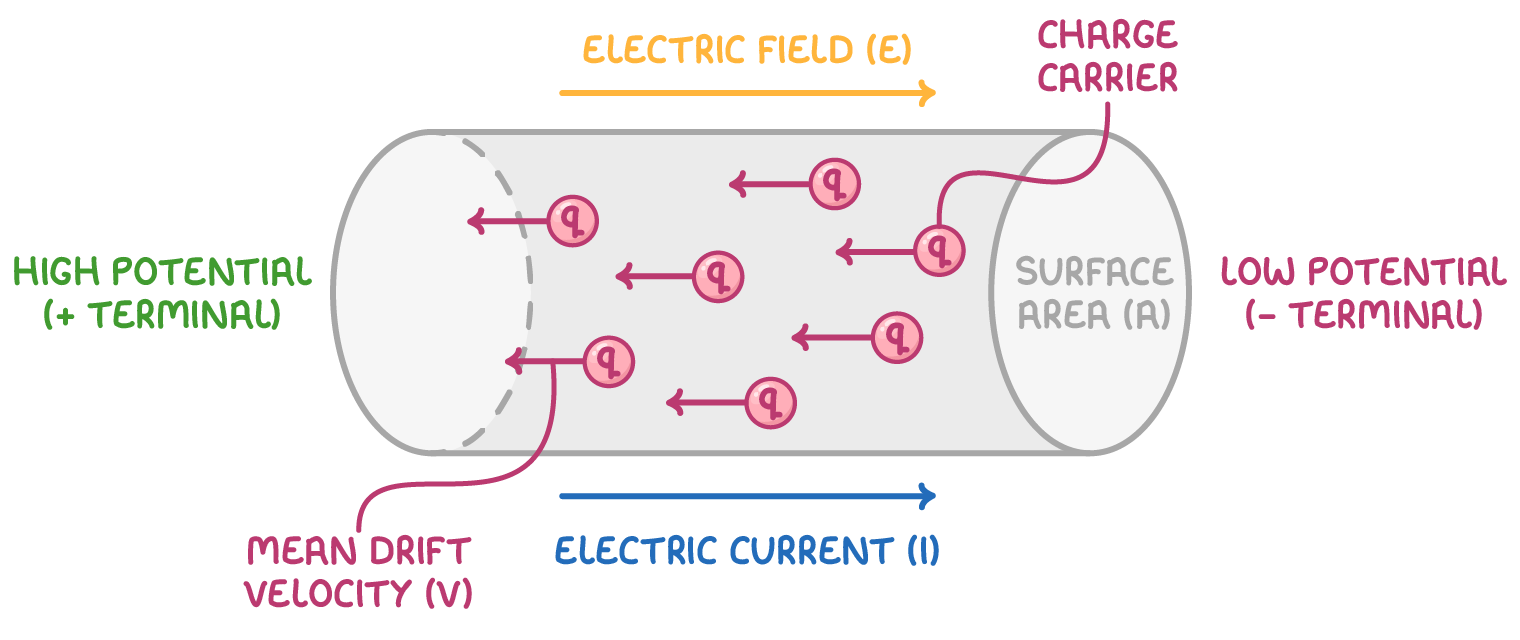Mean Drift Velocity
This lesson covers:
- Introducing mean drift velocity and its connection to current.
- Comparing charge carriers in metals, semiconductors, and insulators.
Mean drift velocity

Mean drift velocity is the average velocity attained by charged particles, such as electrons, in a material due to an electric field, resulting in a net flow of charge.
Key points:
- Charges move randomly but overall tend to drift in one direction.
- The mean drift velocity (v) is the average of these velocities.
The current (I) depends on the cross sectional area, the number density of charge carriers, the charge and the mean drift velocity as given by:
I = A n q v
Where:
I = Current (A)
A = Cross-sectional area (m2)
n = Number of charges per unit volume (m−3)
q = Charge per particle (C)
v = Mean drift velocity (m s−1)
Increasing the number of charges, cross-sectional area, or drift velocity increases the current.
Worked example - Calculating current with mean drift velocity
Calculate the current in a copper wire of cross sectional area 3 x 10-6 m2. The number of charge carriers per unit volume is 8.6 x 1028 m-3. The mean drift velocity in the wire is 0.01 m s-1.
Step 1: Formula
I = A n q v
Step 2: Substitution and correct evaluation
I=3×10−6×8.5×1028×1.6×10−19×0.01=4.08 A
Comparing charge carriers
In metals, many free electrons serve as charge carriers, making them good conductors. Semiconductors have fewer free carriers, so they require a higher drift velocity to achieve the same current as metals. Insulators, on the other hand, have very few or no free carriers, making them poor conductors of electricity.
Ionic solutions and molten ionic compounds also conduct electricity, with both positive and negative ions acting as carriers. In contrast, gases usually do not conduct electricity, but they can become conductive when ionised.